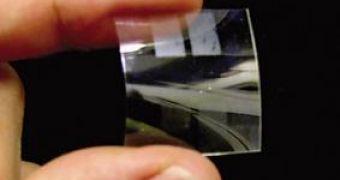What happened to the good old days when a having a notebook implied also having a membership at the local gym because you were forced to carry around something that "weighed a ton", sometimes it could be considered an alternative to bodybuilding. Everything nowadays is lighter, smaller, costs less, has more power, and thanks to some people with ideas, one day your notebook could be transparent, maybe even invisible, who knows.
Japanese scientists Drs Hiroyuki Nishide, Hiroaki Konishi and Takeo Suga at Waseda University are responsible for the development of a battery consisting of a redox-active organic polymer film 200 nanometers in thickness. The technology itself utilizes organic materials for constructing the film-like battery, and it's said to be able to withstand more than 1.000 charge/recharge cycles, while the charging is done in one minute. The only drawback could be that the manufacturing process makes the polymer mechanically tough.
Dr Nishide said: "This has been a challenging step, since most crosslinking reactions are sensitive to the nitroxide radical."
The thin polymer film could give notebook manufacturers the opportunity of storing the energy in different parts of the notebook, giving space for other components, or reducing them all together and saving the space. Why not consider adding an extra layer or layers to the front of the LCD panel, which could be made out of this "plastic battery", having the electrical contacts on the sides of the panel, and being transparent enough not to block the image being transmitted from the LCD itself? This way, you could store the energy and have a lighter, smaller notebook or mobile appliance.
Professor Peter Skabara, an expert in electroactive materials at the University of Strathclyde said: "The plastic battery plays a part in ensuring that organic device technologies can function in thin film and flexible form as a complete package."

 14 DAY TRIAL //
14 DAY TRIAL //